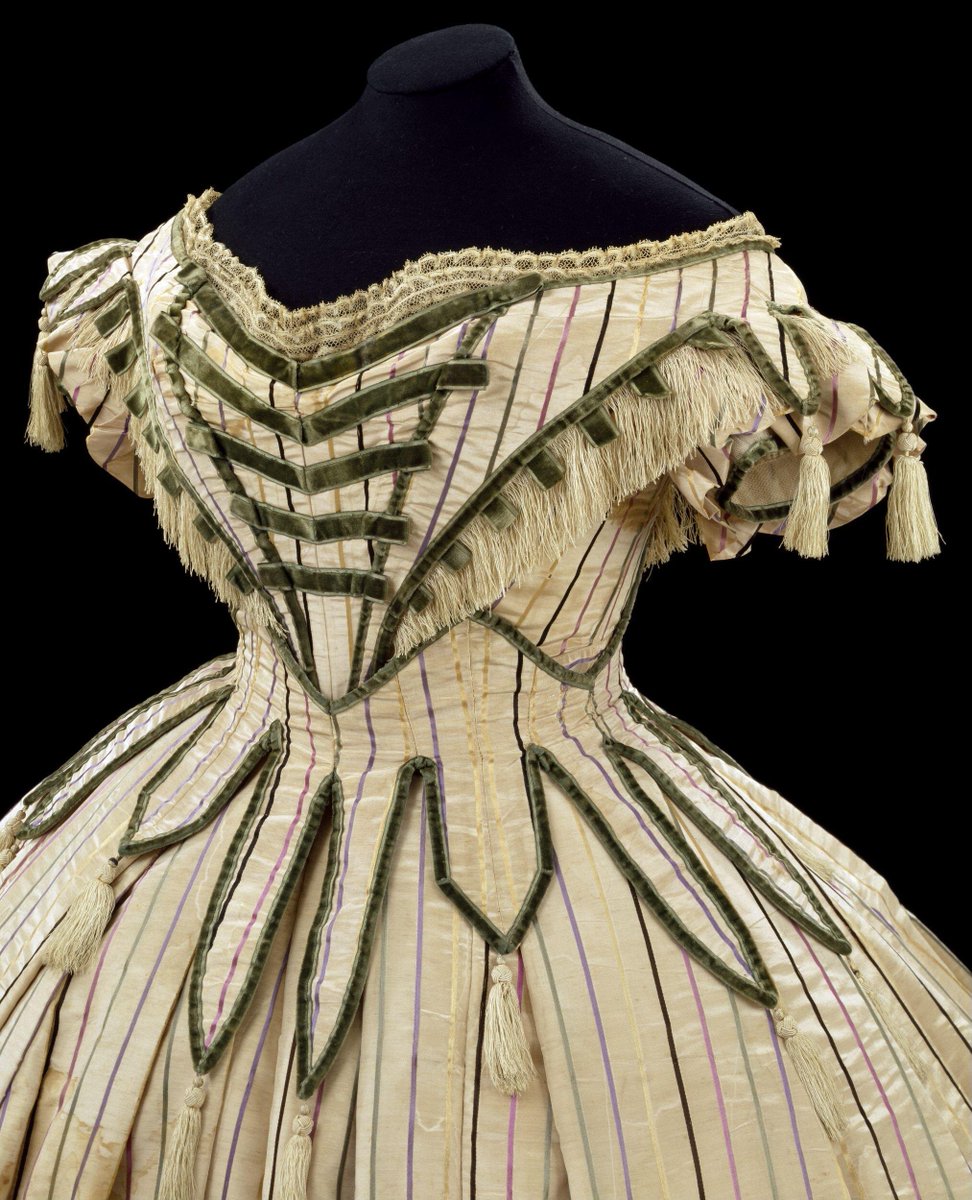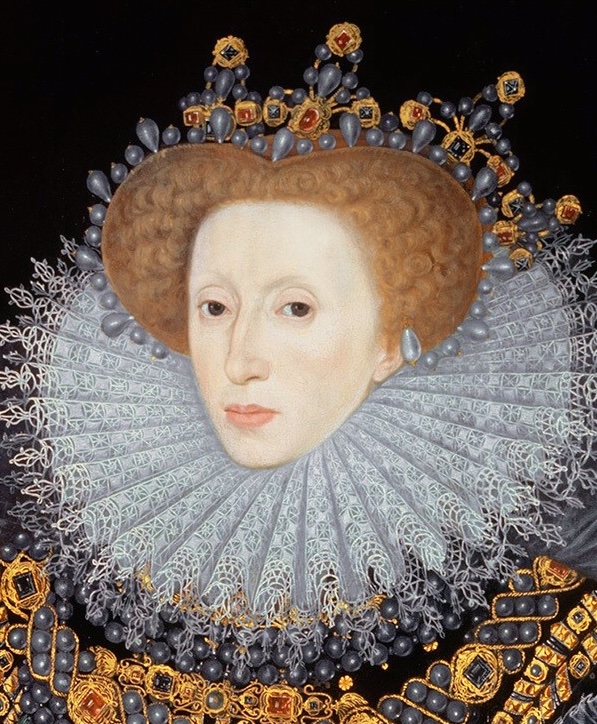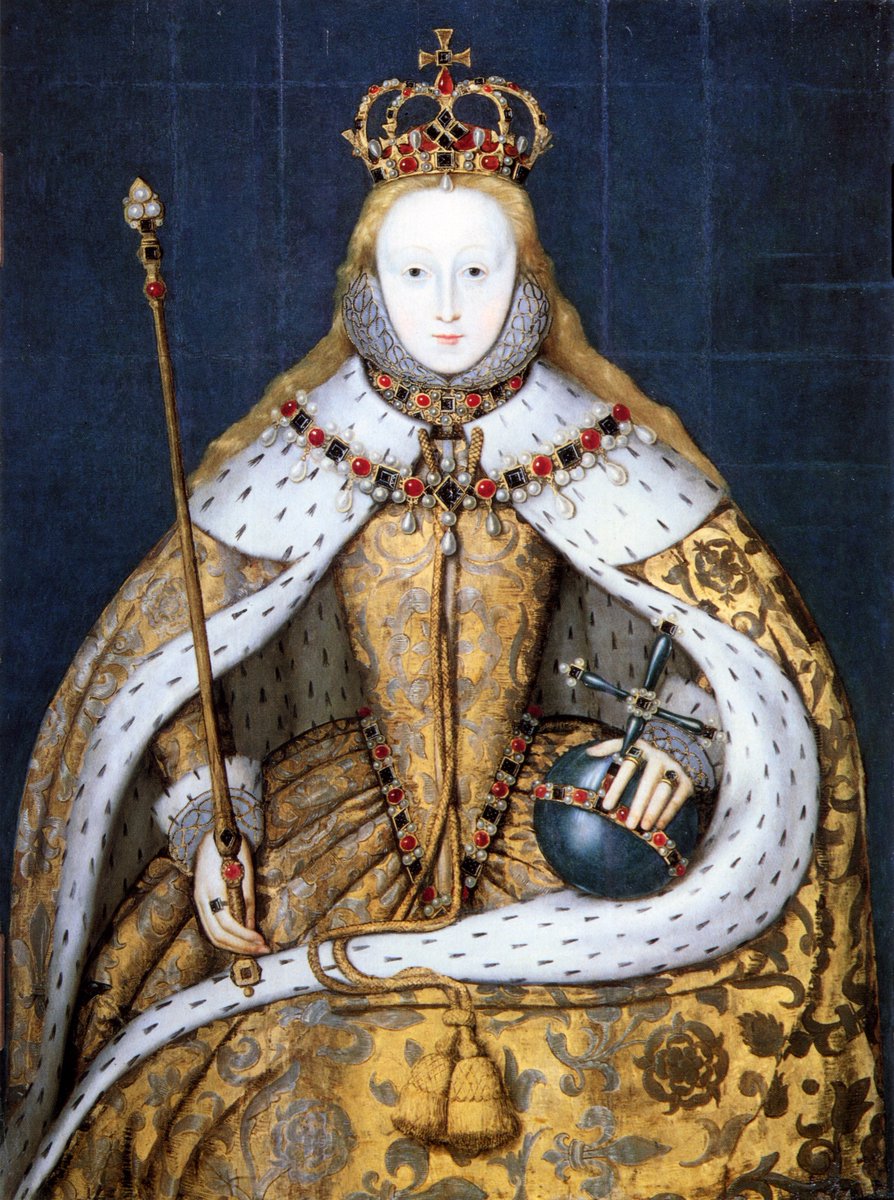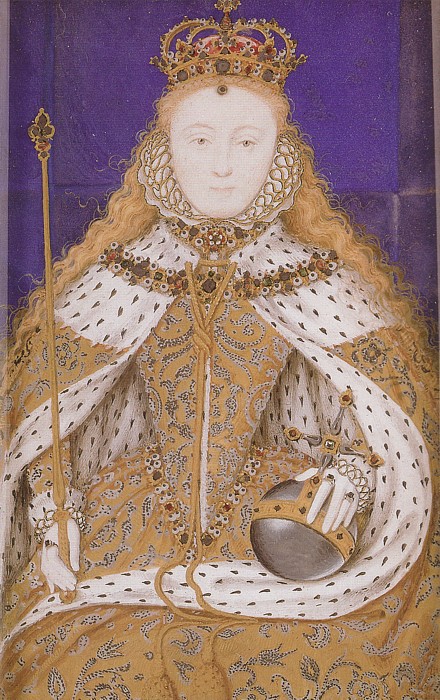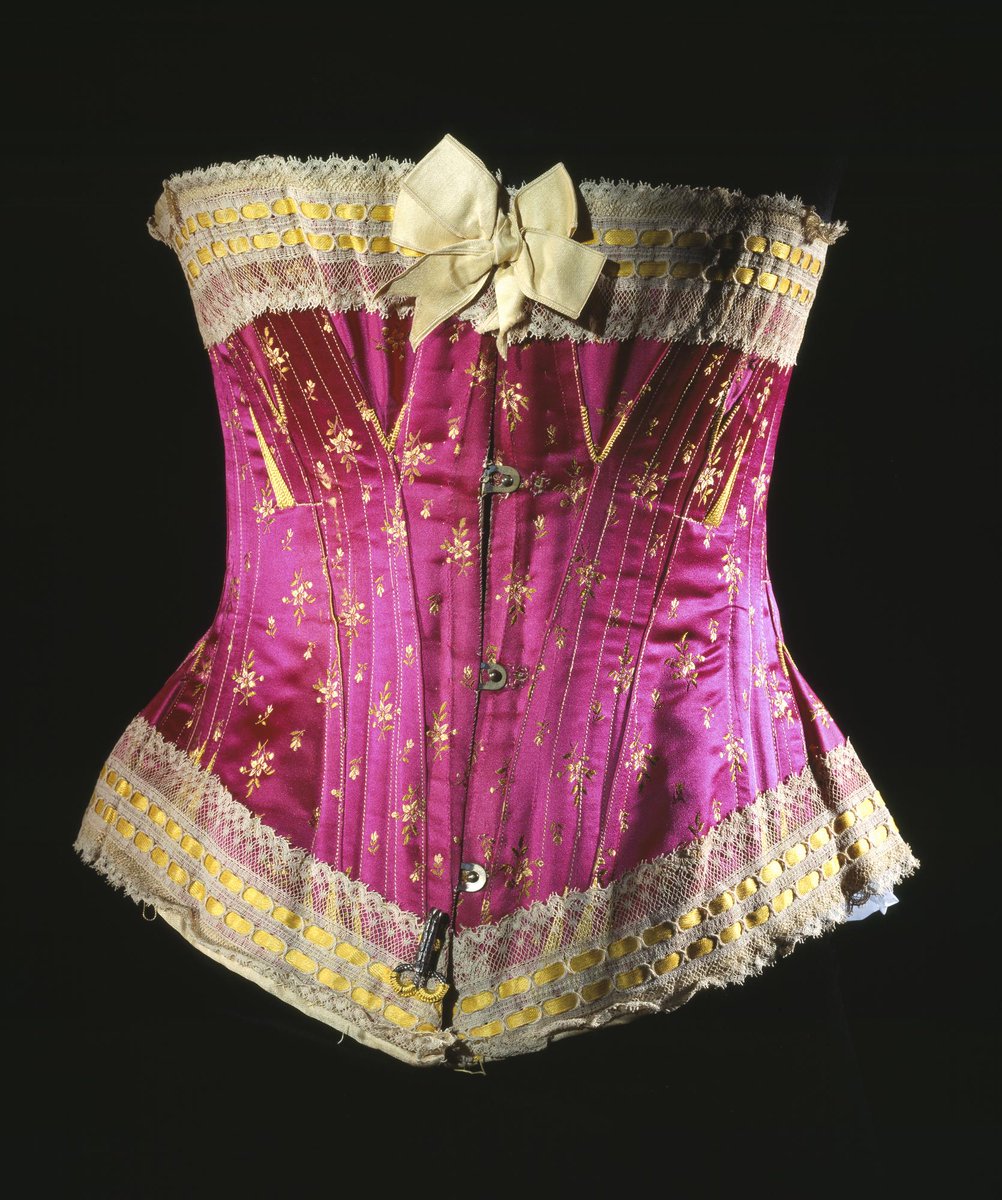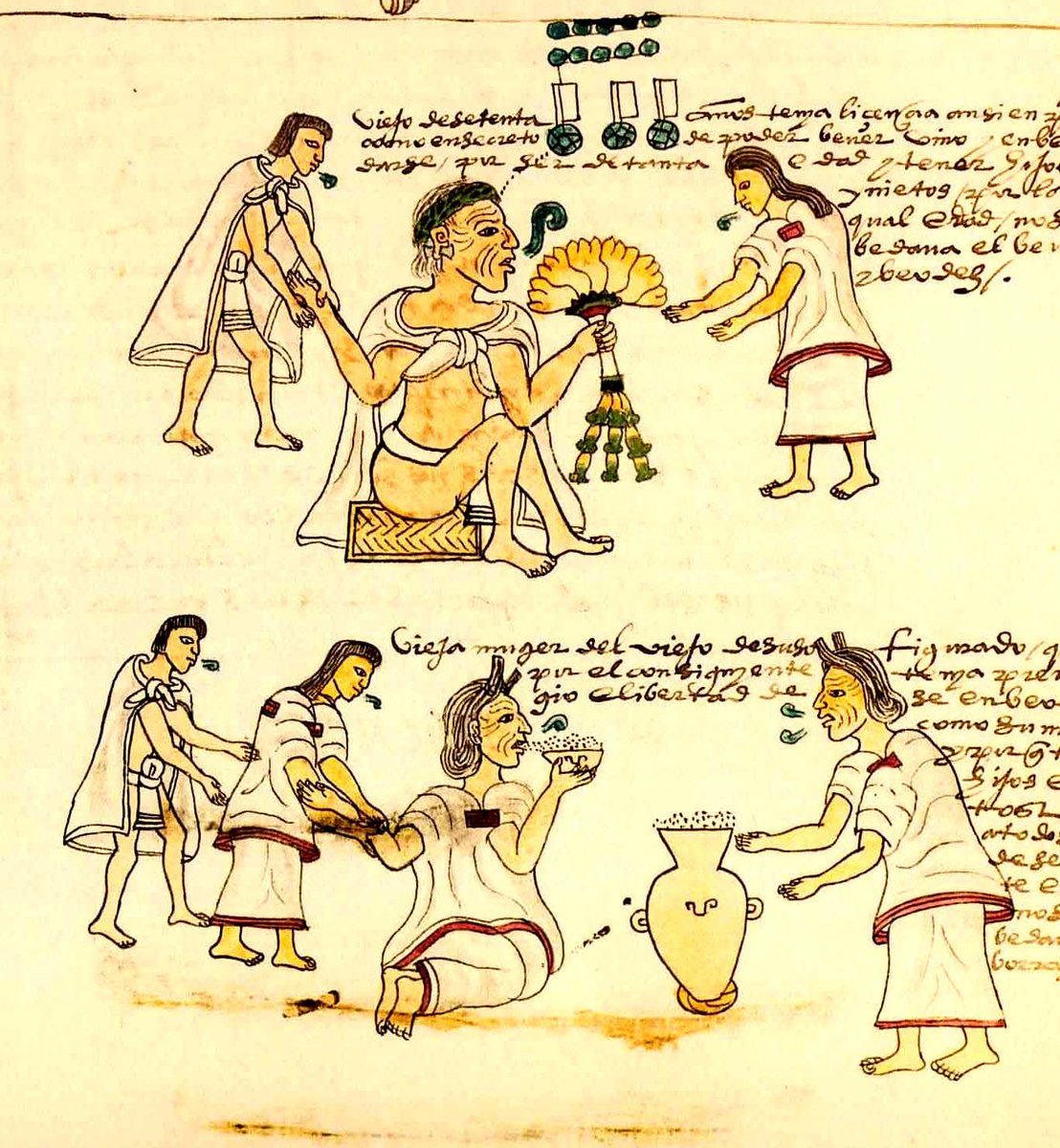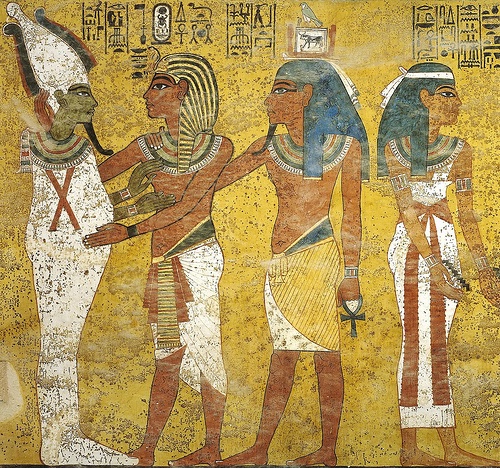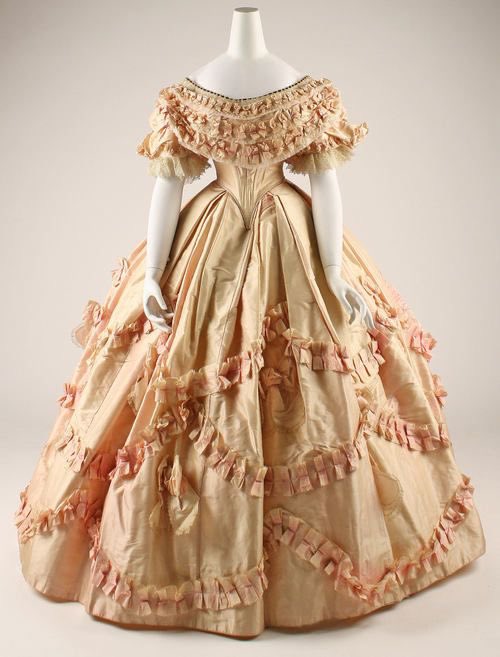
1 - Welcome to #ThreadTalk! This week we're talking stripes. And let me say, y'all have *opinions.*
Which is totally on brand for this pattern.
From the high seas🏴☠️ to the school yard🧑🎓, the red light district 🚨to the palace at Versailles🏰: Let's dive into the striped past.
Which is totally on brand for this pattern.
From the high seas🏴☠️ to the school yard🧑🎓, the red light district 🚨to the palace at Versailles🏰: Let's dive into the striped past.

2 - Stripes may be humankind's first fabric pattern, simply woven in as the yarn color shifted from one to another. The word "stripe" is from "a line in cloth."
And stripes show up everywhere: fabric, pottery, and jewelry. Like this Neolithic (2650 BC) pot from China. Gorgeous!
And stripes show up everywhere: fabric, pottery, and jewelry. Like this Neolithic (2650 BC) pot from China. Gorgeous!

3 - 'Cause you know what? Stripes are POWERFUL. Just like we naturally turn our gaze to the horizon, stripes grab attention. Contrast, y'all.
Unsurprisingly, the great pharaohs of Ancient Egypt chose stripes for their Nemes (headcloths) like head-turning Thuthmose III below.
Unsurprisingly, the great pharaohs of Ancient Egypt chose stripes for their Nemes (headcloths) like head-turning Thuthmose III below.

4 - As it turns out, nearly every culture on Earth uses stripes in some way--from Tibet (19thC) to Peru (500 BC) & beyond. Whether in jewelry or design, it imparts power & more than anything: attention.
But what they mean and WHO wears stripes, that's where the story comes in.

But what they mean and WHO wears stripes, that's where the story comes in.


5 - In Japan, you find stripes in many motifs, and especially in theatre costuming.
This beautiful example--"The Second Ishikawa Monosuke in the Role of Karigane Bunshichi" (a famous outlaw) from 1782 by Katsukawa Shunshō--uses stark contrast and bright reds for impact.
This beautiful example--"The Second Ishikawa Monosuke in the Role of Karigane Bunshichi" (a famous outlaw) from 1782 by Katsukawa Shunshō--uses stark contrast and bright reds for impact.

6 - Many indigenous people in the Philippines use stripes in bold, meaningful ways--sometimes indicating they've killed in battle or hold presitge. These photos are from National Geographic at the turn of the 20th C.
First image: Bagobo woman; Second image: a Bukidnon chief.

First image: Bagobo woman; Second image: a Bukidnon chief.


7 - In India, stripes are often used on turban fabric like this one from Madras, dating from the mid-19thC, but looking strikingly modern.
It's also frequently on the edges of saris, embroidered or brocaded to beautiful impact, like this 19thC choli from Satara . Bonus: dots.

It's also frequently on the edges of saris, embroidered or brocaded to beautiful impact, like this 19thC choli from Satara . Bonus: dots.


8 - And muslin, too, comes in many striped varieties. Some are woven in stripes, and others, like this fragment from Hyderabad (1700-50), had the design applied--in this case, with gum and gold leaf.
I want to run this through my hands so bad. Sigh.
I want to run this through my hands so bad. Sigh.

9 - We also have the artisans of India to thank for an iconic stripe: seersucker! 🥳
That odd name comes from the Persian word for the cloth, shir o shakkar, meaning "salt and sugar" referring to the alternating stripes of different texture and weight. Easy to wash & wear, too.
That odd name comes from the Persian word for the cloth, shir o shakkar, meaning "salt and sugar" referring to the alternating stripes of different texture and weight. Easy to wash & wear, too.

10 - The term "seersucker" can be traced back to the late 17th C (in its Western incarnation) & eventually--due to slavery in the American South and cheaper cotton--it became synonymous with working class, affordable clothing for men and women. 

11 - Seersucker eventually became a sign of the ultra yacht club rich. Which is interesting considering the West's super weird relationship with stripes.
Medieval Europe had BIG FEELS about stripes, namely that they were OF THE DEVIL and EVIL. 😈 See Roy D'Aragon below.
Medieval Europe had BIG FEELS about stripes, namely that they were OF THE DEVIL and EVIL. 😈 See Roy D'Aragon below.

12 - In 1310, in Rouen, France (shout-out to my ancestors) a man was put to death for wearing stripes. Social historian Michel Pastoureau: ''Stripes were the devil's clothing. The dress of prostitutes, of hangmen.''
Stripes got you noticed. And getting noticed was not ideal.
Stripes got you noticed. And getting noticed was not ideal.

13 - It was the Carmelites, an order originally from Palestine, who so shocked 13th century Europeans with their "barred" habits, that eventually it caused the Vatican to ban stripes for ALL clergy.
Europeans also thought Zebras were demonic for their stripes. Come on!
Europeans also thought Zebras were demonic for their stripes. Come on!

14 - Naturally, stripes became popular anyway.
Sailors from Brittany started wearing stripes & it may have helped save their lives (easy to spot overboard). Today we call this the Breton stripe (AKA Marinière)
Mimes also needed to be rescued from their invisible boxes, so...
Sailors from Brittany started wearing stripes & it may have helped save their lives (easy to spot overboard). Today we call this the Breton stripe (AKA Marinière)
Mimes also needed to be rescued from their invisible boxes, so...

15 - Getting noticed was also essential for sex workers. In Bristol, they specifically wore striped hoods to signal their clientele.
The famed & outlandish "macaroni" was also known for his striped hose. And clearly this cartoonist thought very little of the devilish stylist.
The famed & outlandish "macaroni" was also known for his striped hose. And clearly this cartoonist thought very little of the devilish stylist.

15 - Eventually, by the time of the Tudors, stripes started seeping into society esp. with military connotations.
It was still considered a scandalous (or powerful) thing to do, and men in the Renaissance definitely started sporting stripes like Eddie VI here. Mmmm... Pasty.
It was still considered a scandalous (or powerful) thing to do, and men in the Renaissance definitely started sporting stripes like Eddie VI here. Mmmm... Pasty.

16 - Stripes began creeping into the Georgian era by way of France, who was the first country to really take stripes to town.
You see stripes both alone and mixed together with florals (a throwback to China and Japan) in some divine sack dresses. This one has 5 widths of silk.
You see stripes both alone and mixed together with florals (a throwback to China and Japan) in some divine sack dresses. This one has 5 widths of silk.

17 - I said "muslin" so the ghost of Mr. Tilney has arisen, and of course we had many striped muslin gowns in the long Regency.
This gown a far cry from prison garb (which wasn't until later--and created for better retrieval) & exudes innocence rather than seduction.
This gown a far cry from prison garb (which wasn't until later--and created for better retrieval) & exudes innocence rather than seduction.

18 - By the 1820s, stripes start appearing more & more in women's day dresses, combined with vines and floral work on silk. Expensive. The pleating here really elevates the look. This particular gown is British and dates from 1828. It's a last gasp before we go full Victoria. 

19 - And once Queen Victoria dressed her young son in Navy stripes, well, all bets were off. The Victorians went wild for stripes in every possible way imaginable.
The bigger & bolder the better. This is a tame gown in comparison to some of the later ones.
Then came sports!
The bigger & bolder the better. This is a tame gown in comparison to some of the later ones.
Then came sports!

20 - Pleating and the HI I AM WEARING STRIPES AND SPORTING LOOK AT ME became a big deal for women, I guess. So dresses like these (meant for playing tennis) popped up in high society.
Swimsuits also had big stripes because women might drown just looking at water, right?
Swimsuits also had big stripes because women might drown just looking at water, right?

21 - Pinstripes came later for suits, but men have sported stripes a long time, as well.
This one (1790s, France) is MY FAVE because of the effect the alternating stripes. Makes you dizzy in a good way, you know? Mrrwrow. 😚
This one (1790s, France) is MY FAVE because of the effect the alternating stripes. Makes you dizzy in a good way, you know? Mrrwrow. 😚

22 - Kimonos continue to make my heart flutter, and this mid-20th century example takes stripes and the art of lines to the LIMIT (to quote Strongbad). 

• • •
Missing some Tweet in this thread? You can try to
force a refresh


